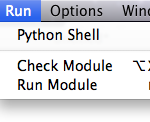One of the librarians at Washington University played this video for our students. It was a great supplement to their lesson on how to use the internet for research.
Category: Technology
Media Profanity and Aggression
This research shows that profanity is not harmless. Children exposed to profanity in the media think that such language is ‘normal,’ which may reduce their inhibitions about using profanity themselves. And children who use profanity are more likely to aggress against others.
–Brad Bushman (2011) in a Brigham Young University Press Release.
Exposure to profanity in videogames and on TV appears to affect how teens view and use profanity, and makes them more aggressive. These are the key results of a paper by Sarah Coyne (Coyne et al., 2011). The full article is available online, but is summarized here.
While the first part, at least, of this result might seem obvious — that seeing profanity desensitizes, familiarizes, and leads to increased use — it’s nice to have some scientific corroboration.
The more disturbing result, perhaps, is the link between profanity and aggression. It’s a moderate effect, but the link appears similar to the connection between war games and aggression.
Profanity is kind of like a stepping stone. You don’t go to a movie, hear a bad word, and then go shoot somebody. But when youth both hear and then try profanity out for themselves it can start a downward slide toward more aggressive behavior.
— Sarah Coyne (2011) in a Brigham Young University Press Release.
Loom: Spider Catches the Moth
Algebra and Programming with VPython
Computer programming is the place where algebra comes to life. Students seem to get really excited when they write even the simplest instructions and see the output on the screen. I’m not sure exactly why this is the case, but I suspect it has something to do with being able to see the transition from abstract programming instructions to “concrete” results.
So I’ve decided to supplement my Algebra classes with an introduction to programming. I’m using the Python programming language, or, more specifically, the VPython variant of the language.
Why VPython? Because it’s free, it’s an easy-to-use high-level language, and it’s designed for 3d output, which seems to be somewhat popular these days. The oohs and aahs of seeing the computer print the result of a+b turn into wows when they create their first box. I’ve used the language quite a bit myself, and there are a lot of other interesting applications available if you search the web.
VPython was created to help with undergraduate physics classes, but since it was made to be usable by non-science majors, it’s really easy for middle and high school students to pick up. In fact, NCSU also has a distance education course for high school physics teachers. They also have some instructional videos available on YouTube that provide a basic introduction.

I use VPython models for demonstrations in my science classes, I’ve had middle school students use it for science projects, and I’ve just started my middle school algebra/pre-algebra students learning it as a programming language and they’re doing very well so far.
What I hope to document here is the series of lessons I’m putting together to tie, primarily, into my middle school algebra class, but should be useful as a general introduction to programming using VPython.
Getting VPython
You’ll need to install Python and VPython on your system. They can be directly downloaded from the VPython website’s download page for Windows, Macintosh or LINUX.

Once they’re installed, you’ll have the IDLE (or VIDLE) program somewhere on your system; a short-cut is usually put on the desktop of your Windows system. Run (double-click) this program and the VPython programming editor will pop up any you’re ready to go. You can test it by typing in something simple like:
a = 1 b = 2 c = a + b print c
Then you run the program by going through the Run–>Run Module in the menu bar.
Which should cause a new window to pop up with:
Python 2.7.1 (r271:86882M, Nov 30 2010, 09:39:13) [GCC 4.0.1 (Apple Inc. build 5494)] on darwin Type "copyright", "credits" or "license()" for more information. >>> ================================ RESTART ================================ >>> 3 >>>
Even better might be to test the 3d rendering, which you can do with the following program:
from visual import * box()
which creates the following exciting image:

To rotate the view, hold down and drag the right mouse button. To zoom in or out, hold down the right and left buttons together and drag in and out.

Lessons
Lesson 1: Variables, Basic Operations, Real and Integer Numbers and the First Box.
Lesson 2: Creating a graphical calculator: Coordinates, lists, loops and arrays: A Study in Linear Equations
Mindmapping Online with Mind42

I was trying to figure out how I could create a graphic organizer/mindmap to outline my math class that my students could access online. Even better would be if they could also edit the map online. That way I could set up the outline of my lesson notes and they could fill in definitions for vocabulary words. Mind42 (pronounced mind for two) allows just that. It’s free to use and allows you to link to or embed your mindmaps (e.g. pre-Algebra/Algebra) into other websites:
It’s almost perfect, all it needs is for you to be able to save the state of the map, with certain branches collapsed for example, or with a set zoom level. Right now the best way to explore the above map is to collapse all the nodes (use the second button on the lower left) and gradually expand them out as you go through.
I do think the style of the nodes and lines on the maps are elegant and make it easy to read. It’s also really easy to create the maps.
Apart from putting your maps to other websites, you can also print them out as pdf’s or images (png), or you can save the map itself in a format that other mindmapping software, like Freemind, can use.
I really like this website, and as soon as they add the ability to save zoom levels and collapsed nodes I’m going to try using it for my classes.
Printable Cups: And Other 3D objects

Following up on Fully Printed‘s vision of a future with 3d printing, I came across Shapeways, a website that lets you upload 3d designs and “prints” them in your choice of objects. One user, Cunicode chose to make different cup design every day. I’m quite taken by their Low Resolution cup.
In the finished cup, you can clearly see the quadrilateral and triangular facets that make up the 3d design’s mesh. I like that.

So now I’m just waiting until something interesting occurs to me. Shapeways would be a great place for creating some unique manipulatives.
Build Your Own Solar System: An Interactive Model
National Geographic has a cute little game that lets you create a two-dimensional solar system, with a sun and some planets, and then simulates the gravitational forces that make them orbit and collide with each other. The pictures are pretty, but I prefer the VPython model of the solar system forming from the nebula.
The models starts off with a cloud of interstellar bodies which are drawn together by gravitational attraction. Every time they collide they merge creating bigger and bigger bodies: the largest of which becomes the sun near the center of the simulation, while the smaller bodies orbit like the planets.
This model also comes out of Sherwood and Chabay’s Physics text, but I’ve adapted it to make it a little more interactives. You can tag along for a ride with one of the orbiting planets, which, since this is 3d, makes for an excellent perspective (see the video). You can also switch the trails on and off so you can see the paths of the planetary bodies, note their orbits and see the deviations from their ideal ellipses that result from the gravitational pull of the other planets.
I’ve found this model to be a great way to introduce topics like the formation of the solar system, gravity, and even climate history (the ice ages over the last 2 million years were largely impelled by changes in the ellipticity of the Earth’s orbit).
National Geographic’s Solar System Builder is here.
Icelandic Constitution Update
Iceland’s new draft of a constitution has been submitted to parliament. The drafters relied heavily on citizen comments using internet sites like Twitter and Facebook. Anyone who’s scrolled through the comments sections of just about any site open to the general public would probably worry that the ratio of good information to bad would be pretty small (a low signal-to-noise ratio). But,
“What I learned is that people can be trusted. We put all our things online and attempted to read, listen and understand and I think that made the biggest difference in our job and made our work so so so much better,” [Salvor Nordal, the head of the elected committee of citizens] said.
–Valdimarsdottir (2011): Icelanders hand in draft of world’s first ‘web’ constitution on phsorg.com
The final draft is here (the link uses Google Translate, so it’s not a perfect translation). It will be interesting to see what the parliament does with it now.
From the constitution:
12th Art. Rights of children
All children should be guaranteed the protection and care of their welfare demands.
What the child’s best interests shall always prevail when taking decisions on matters relating thereto.
Child should be guaranteed the right to express their views in all matters relating thereto shall take due account of the views of the child according to age and maturity.
–Article 12 of draft Icelandic Constitution via Google Translate.